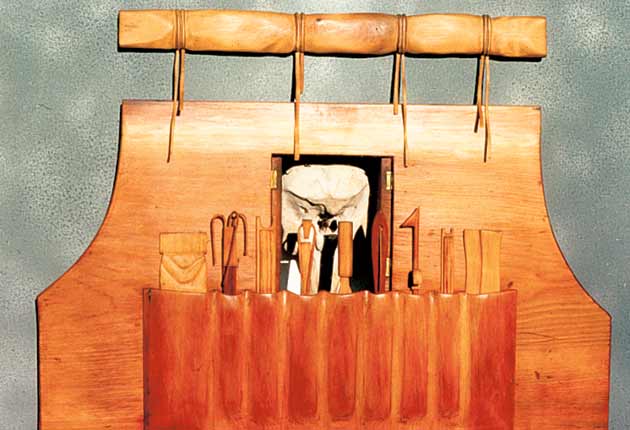Will Maclean: Collected Works 1970-2010, The Fleming Collection, London

When we think of artists who make sealed, glazed boxes filled with objects, we immediately conjure up the dizzyingly delightful worlds-within-worlds of Joseph Cornell. Will Maclean, who also makes wooden box constructions, lives in an entirely different country of the mind. There is no shrieky surrealist dancing on display here. There are no mirrorings, and there is no cheeky visual play. In fact, there is an air of profound melancholy about Maclean's fabrications. A spume from off the North Sea seems to have blown up from nowhere. It is nothing to do with the fact that all except the earliest almost entirely lack vibrant colour, and that they are arranged around the walls of this gallery in a way that rather reminds you of a funeral procession. That is just a part of it. It is also about the fact that this artist, the son of a harbour master from Inverness, is memorialising, with great and impassioned sorrow, that which is quietly passing away: the Gaelic maritime culture of the Highlands and the Islands. Like his late friend, the Gaelic poet Sorley Maclean, he tends to strike a note of sustained lamentation.
Maclean is a scavenger of often fiddly bits of bone, wood, fishing line, canvas, weights, hooks, scraps of log books, ceramic fish. All remnants of a once vibrant culture. He reassembles them to create oblique narrative worlds that tell bygone tales about local traditions, doomed sea voyages, emigration, the Clearances, his own relatives. One large tableau, Abigail's Apron, shows us the apron of this aunt, carved out of a single, shapely, down-lapping piece of polished wood. It has a pocket that contains a wooden-doll-like representation of her husband and some of the fishing clutter that were a part of his everyday world. This is pure shamanism, almost voodoo. The objects are often arranged, even stacked inside their boxes, hieratically, as if they are religious symbols of a kind, reliquaries, ex-voto images, ghostly echoings of the crucifixion. The way in which some of these objects are organised and suspended makes us reflect upon how much the shape of a fish resembles that of a coracle. Everything tends towards paleness and ceremoniousness. There is no humour here. Laughter would be quite out of place. One work in particular shows us a rowing boat end-on, skewered by a thin length of pale wood. Its oars fan out like the helpless arms of Christ. Mummified forms lie in the bottom of the boat, and beneath the boat there is a raised area covered with near invisible crosses. The dead. The piece is called Canada Passage, Cholera Bay.
The works often tend towards abstraction, but they almost always stop short. Maclean is a gentle pedagogue. He wants to teach us about these things, to have us recognise the provenance and the significance of what he is showing us. He wants the sadness to be shared around among the neighbours. So many of these bits and pieces were usable once. Now they are fragments shored against their ruin, things set aside and apart, to force us to reflect upon everything that they were once good for.
To 4 June (020 7042 5730)
Subscribe to Independent Premium to bookmark this article
Want to bookmark your favourite articles and stories to read or reference later? Start your Independent Premium subscription today.

Join our commenting forum
Join thought-provoking conversations, follow other Independent readers and see their replies